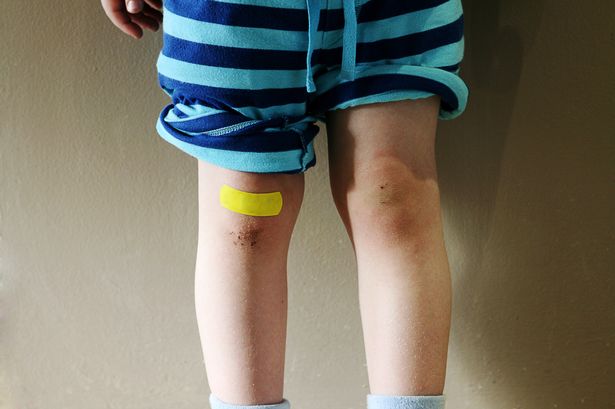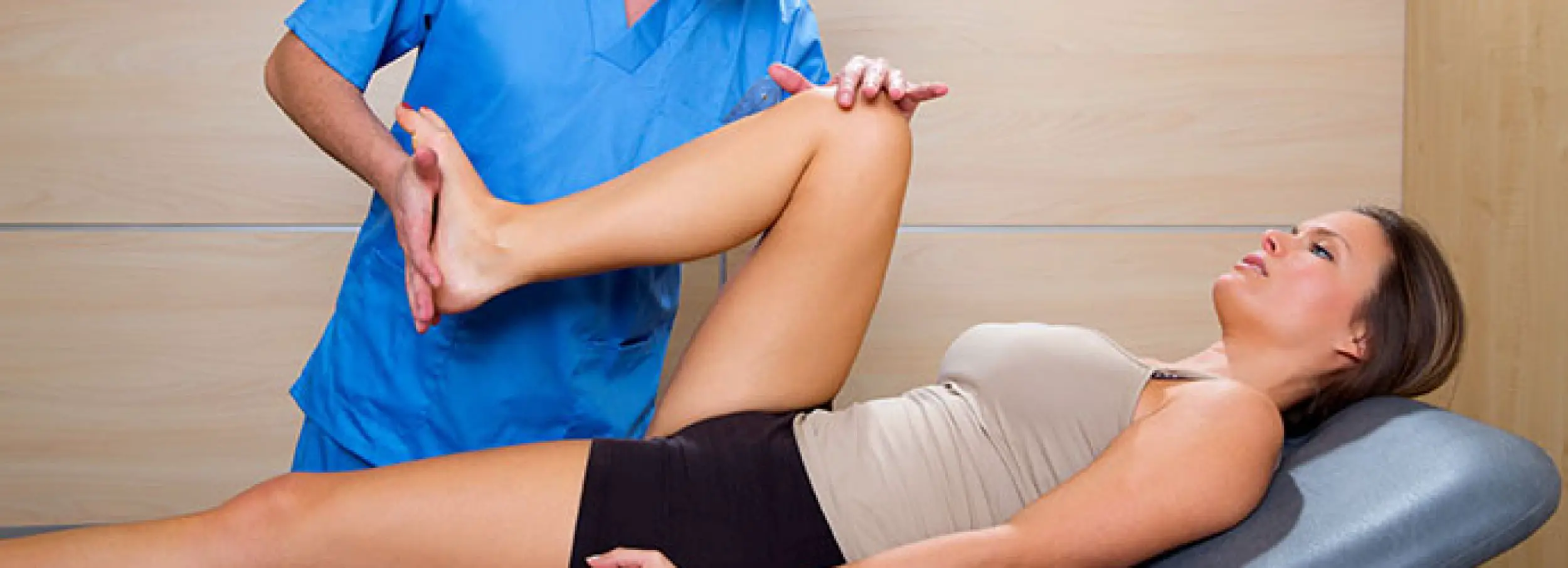Knee pain does not appear to be something kids would complain about, and most people relate this type of pain with older men with arthritis and young adults overdoing at work or performing too many squats at the gym without the proper technique.

The only reason why children would report knee pain is after an external sore or wound that is likely to result from their hyperactivity during play time. However, children are not immune to having bone and joint problems, including a rare form of arthritis called juvenile rheumatoid arthritis. This disease is associated with pain and swelling, similar to many other types of arthritis. But what if your child has knee pain without any apparent joint swelling?
In this article, you will find a few useful tips to identify whether or not you need to worry about knee pain in children, the leading diagnoses a doctor would likely consider, and what to do if knee pain is associated with an injury or trauma.
Do you need to worry?
Knee pain in children and adolescents is likely to have different causes than adults. Instead of arthritis, doctors usually try to rule out overuse injuries, an imbalance in strength or flexibility, or a bone growth disease. However, not all knee pain problems in children and adolescents are caused by a serious health problem.
As we mentioned in the introductory part of this article, knee pain is often associated with an injury or wound. Kids tend to be overactive, and they sustain a lot of them. If that’s your case, there are certain things you can do at home, but it is better to ask for professional help when knee pain is continuous and starts affecting your kid’s level of activity.
A good way to examine knee pain at home is by assessing knee flexibility and muscle strength. Ask your kid to move his knee in circular motions, performing a few flexions and extensions while laying down in bed. Hold his knee and perform gentle rotation movements. If your kid is unable to perform a full range of movements by himself or feels a surge of pain when you are touching him, it is probably something a physiotherapist or a pediatrician should evaluate right away.
Some children complain about leg pain as a part of their growing pains, which is a common reason for them to wake up in the middle of the night with leg pain. However, we should mark a clear difference between growing pains and knee pain: growing pains in children are poorly located, and they usually affect the back of the knee, their thighs or calves.
If your child has a very distinct pain located in the knee, this accounts as joint pain, and you should be careful when it is sustained, when it forces your kid to limp or change his walking pattern, or when associated with rashes, fever, tiredness, muscular weakness, or any other disturbing symptom.
The approach of waiting and seeing what happens is not the best solution when knee pain is continuous. This does not mean that your child has something wrong, but he definitely needs a professional opinion to know what is causing this type of knee pain to help your child recover from any bone problems.
Possible causes of knee pain in children and adolescents
Parents are always worried about their children, and if you’re reading these lines, you are probably looking for possible diagnoses and orientation about your individual case. We have described above the fundamental steps you need to take when your children complain about knee pain with no associated swelling. Sometimes there’s nothing to worry about, and pain is self-limited, and there are no alarm signs and symptoms to raise any suspicion. However, what if your children complain about a long-lasting or severe pain that impairs their normal physical activity and their energy levels?
In this case, what you need is a health professional to guide you through the possible diagnoses and perform the physical exam, X-rays and any other method to aid in the process. In the next couple of lines, we will list a few of the conditions a physician would try to rule out and what are they about. Please note that the following list is not intended for you to reach a diagnosis. Even skilled doctors need specialized physical exams and various tests to reach their diagnosis. Instead, this is a preliminary guide you can have as an orientation about your individual case, and you can come back any time if you have a doubt about terms after your child has been diagnosed.

These are the most important diseases to consider when there is a continuous source of pediatric knee pain:
- Patellofemoral syndrome: The patella or kneecap is a somewhat triangular bone that makes up and protects the knee joint. A series of events may cause the patella to move about, and sometimes the patella stays in place, but there is an irritation in the nerve endings of the area. It would give pain when climbing stairs or when your child sits for a prolonged time, and it is often alleviated by strengthening leg muscles to realign the kneecap.
- Patellofemoral dysplasia: This can be either congenital or acquired, and there are various levels depending on how severe it is. It is a malalignment of the structures in the joint and may result in subluxation, a recurrent dislocation or a long-standing (chronic) dislocation of the patella. Under this diagnosis, children will likely need strengthening of the leg muscles, and orthopedic treatments to prevent the progression of the disease.
- Jumper’s knee: Also known as patellar tendinopathy, which means the patella is fine, but the tendons involved in the area are somehow affected. This is the classic case of a child who feels some pain which is aggravated after hopping or jumping. The tendon is tender and may be thickened or filled with nodules.
- Hip problems: As incredible as it may sound, knee pain in children is sometimes a referred pain from the hip, and your doctor might need to perform a series of exams to rule out various syndromes affecting the hips. The symptoms are quite similar to each other, and only a qualified physician would be able to make out the difference.
- Bone growth disorders: In most cases, bone growth disorders are accompanied with some swelling of the joint, but sometimes it is very mild and difficult to detect. Thus, your doctor would likely need to rule out a series of bone growth disorders such as Osgood-Schlatter’s disease and Sinding Larsen Johansson Syndrome.
- Bipartite patella: The patella starts as cartilage and ossifies after 3 to 5 years. When there are various centers of ossification, the space in between them may appear as an empty area in X-rays and would lead us to think there’s a fracture. This condition is often asymptomatic, but when it gives out symptoms, it is often anterior knee pain and tenderness in the area of the patella.
- Osteochondritis dissecans: It is a serious condition of the knee that results from a severe lesion in bone tissue or cartilage or microscopic lesions sustained for a very long time. These problems cause necrosis in the area and start separating the cartilage from the bone. Such a displacement in the structures of the knee results in pain, instability, and swelling may be present as well.
- Knee tumors: There are both benignant and malignant tumors affecting the knee, and even if they are a rare cause of pain, they should be ruled out when there is no other explanation.
As you can see, there are various diagnoses to be made, and symptoms may be very similar to each other. In general, your child may need a doctor’s opinion whenever you see a change in the structure of the knee, continuous limping, a reduction in physical activity, severe pain that does not appear to be caused by an injury, and any other concerning symptom that does not seem normal.
In most cases, treatment will include strengthening exercises, and surgery is a rare approach that is only left out as the last resource. The majority of the situations described above may progress further and cause more damage in the articulation, which is why it is not advised to wait and see when you detect an uncommon or worrying type of knee pain in your child.
References:
Houghton, K. M. (2007). Review for the generalist: evaluation of anterior knee pain. Pediatric Rheumatology, 5(1), 8.
Staheli, L. (2002). Pediatric Orthopaedic Secrets, 2e. Hanley & Belfus, Inc.
Flynn, J. M., Kocher, M. S., & Ganley, T. J. (2004). Osteochondritis dissecans of the knee. Journal of Pediatric Orthopaedics, 24(4), 434-443.
Hall, R., Foss, K. B., Hewett, T. E., & Myer, G. D. (2015). Sport specialization’s association with an increased risk of developing anterior knee pain in adolescent female athletes. Journal of sport rehabilitation, 24(1), 31-35.
